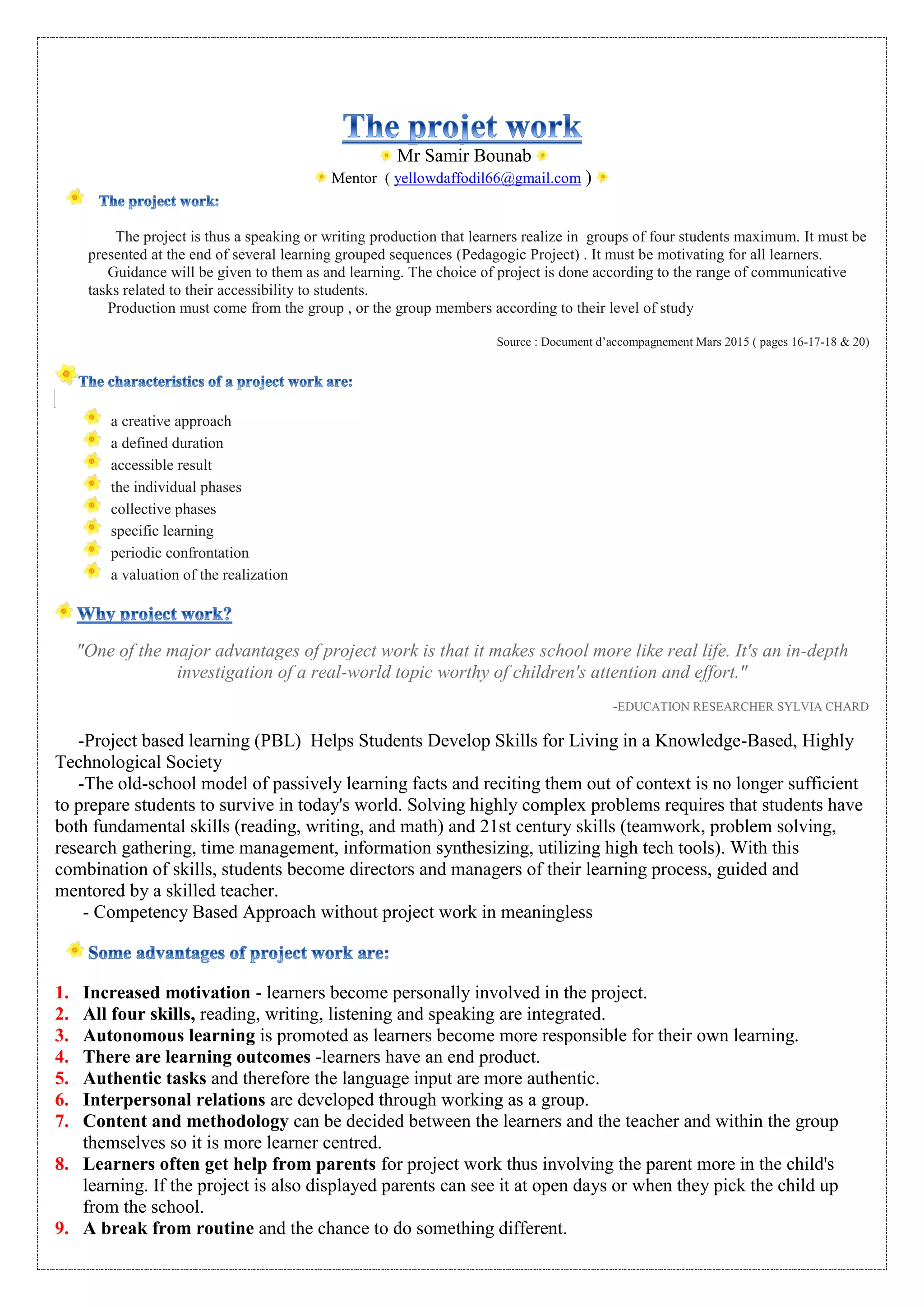The document outlines a project-based learning approach designed to engage students in group work while developing essential communication and collaboration skills. It emphasizes the teacher's shifting role from knowledge holder to facilitator and the importance of student autonomy in project selection and execution. Key advantages include increased motivation, integration of learning skills, and the promotion of real-world applications, making education more relevant and effective for students.



